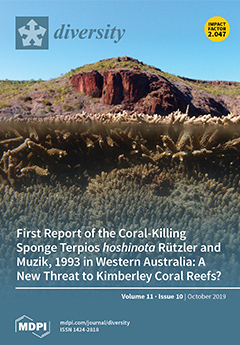Straw retention, an alternative to artificial fertilization, commonly mitigates soil degradation and positively affects soil fertility. In this study, we investigated the succession of soil bacteria during two sugarcane straw retention treatments (control (CK) and sugarcane straw retention (SR)) and at four depths
[...] Read more.
Straw retention, an alternative to artificial fertilization, commonly mitigates soil degradation and positively affects soil fertility. In this study, we investigated the succession of soil bacteria during two sugarcane straw retention treatments (control (CK) and sugarcane straw retention (SR)) and at four depths (0–10, 10–20, 20–30, and 30–40 cm) in fallow soil in a sugarcane cropping system. Using an Illumina MiSeq (16S rRNA) and soil enzyme activity, we explored the SR influence on soil bacterial communities and enzyme activities and its inclusive impact on soil fertility, with an emphasis on topsoil (0–10 cm) and subsoil (10–40 cm). Our results show that SR effectively improved soil fertility indicators (C, N, and P), including enzyme activities (C and N cycling), throughout the soil profile: these soil parameters greatly improved in the topsoil compared to the control. Sugarcane straw retention and soil depth (0–10 cm vs. 10–40 cm) were associated with little variation in bacterial species richness and alpha diversity throughout the soil profile. Subsoil and topsoil bacterial communities differed in composition. Compared to the CK treatment, SR enriched the topsoil with
Proteobacteria,
Verrucomicrobia,
Actinobacteria,
Chloroflexi, and
Nitrospirae, while the subsoil was depleted in
Nitrospirae and
Acidobacteria. Similarly, SR enriched the subsoil with
Proteobacteria,
Verrucomicrobia,
Actinobacteria,
Chloroflexi,
Gemmatimonadetes, and
Bacteroidetes, while the topsoil was depleted in
Acidobacteria,
Gemmatimonadetes, and
Planctomycetes compared to the CK. At the genus level, SR enriched the topsoil with
Gp1,
Gp2,
Gp5,
Gp7,
Gemmatimonas,
Kofleria,
Sphingomonas, and
Gaiella, which decompose lignocellulose and contribute to nutrient cycling. In summary, SR not only improved soil physicochemical properties and enzyme activities but also enriched bacterial taxa involved in lignocellulosic decomposition and nutrient cycling (C and N) throughout the soil profile. However, these effects were stronger in topsoil than in subsoil, suggesting that SR enhanced fertility more in topsoil than in subsoil in fallow land.
Full article





